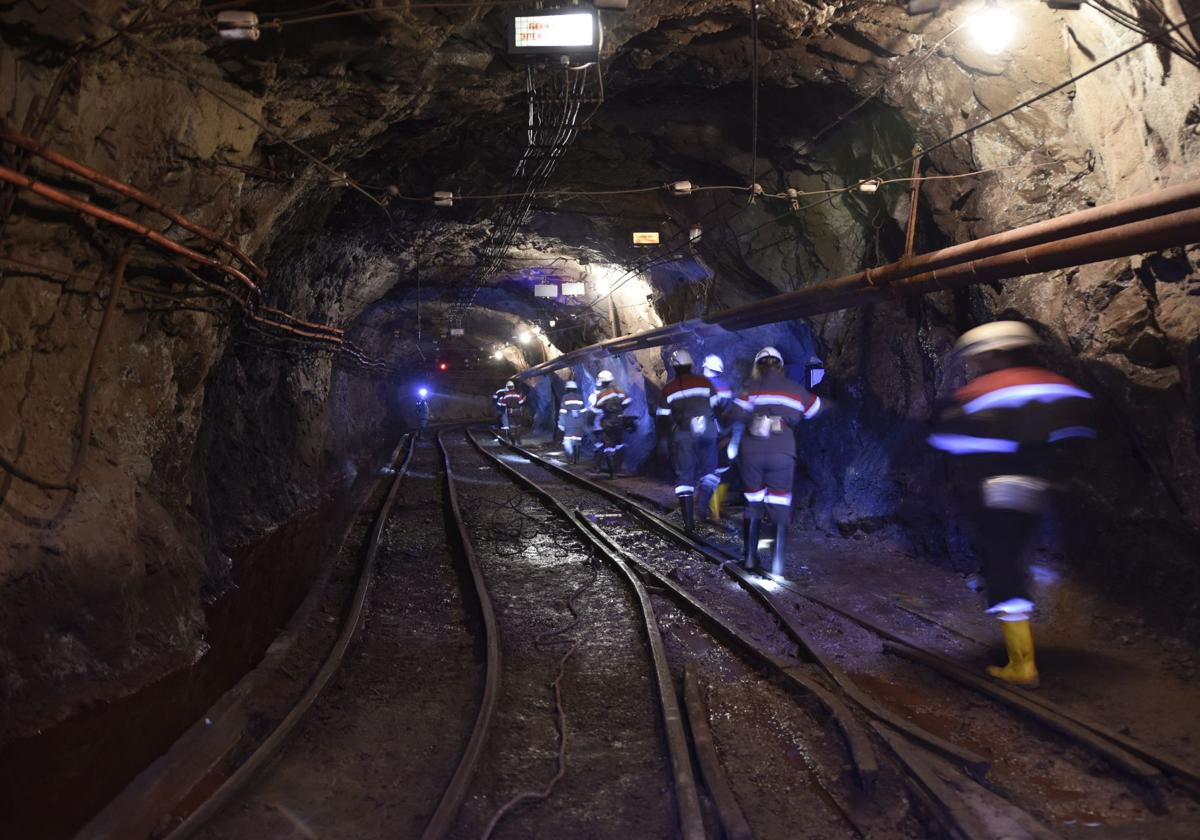Malaga has untapped mineral deposits 'critical' for technology and armaments
The province has ample reserves of some of the most sought-after metals used in electric cars and also the telecommunications field
Copper, chromium, nickel, cobalt, titanium, graphite, boron, lithium, platinum, tungsten, bismuth, tellurium and rare earths. These are the most sought-after natural resources, and there are traces of them all in Malaga. At a time when major countries are greedily seeking strategic minerals, for technology, electric vehicles and armaments, untapped deposits have been discovered in the province - some found in abandoned mines.
This is reflected in the studies led in recent years by renowned Malaga geologist and geotechnical engineer Juan Carlos Romero, who was director at the Museum of Geology and Mineralogy for years (now closed). This institution also served as a base for sample collection throughout the province.
In current times, mining has once again become a priority: searching for ores, the minerals from which strategic metals are extracted. These components are essential for mobile phones, computers, telecommunications, the aerospace industry, electric vehicles, renewable energy, batteries, medical equipment, drones, robotics and artificial intelligence. Defined as "critical" due to their scarcity, they are difficult to extract and they are only found in certain countries. In this vein, Romero claims "the geological wealth of our strategic resources".
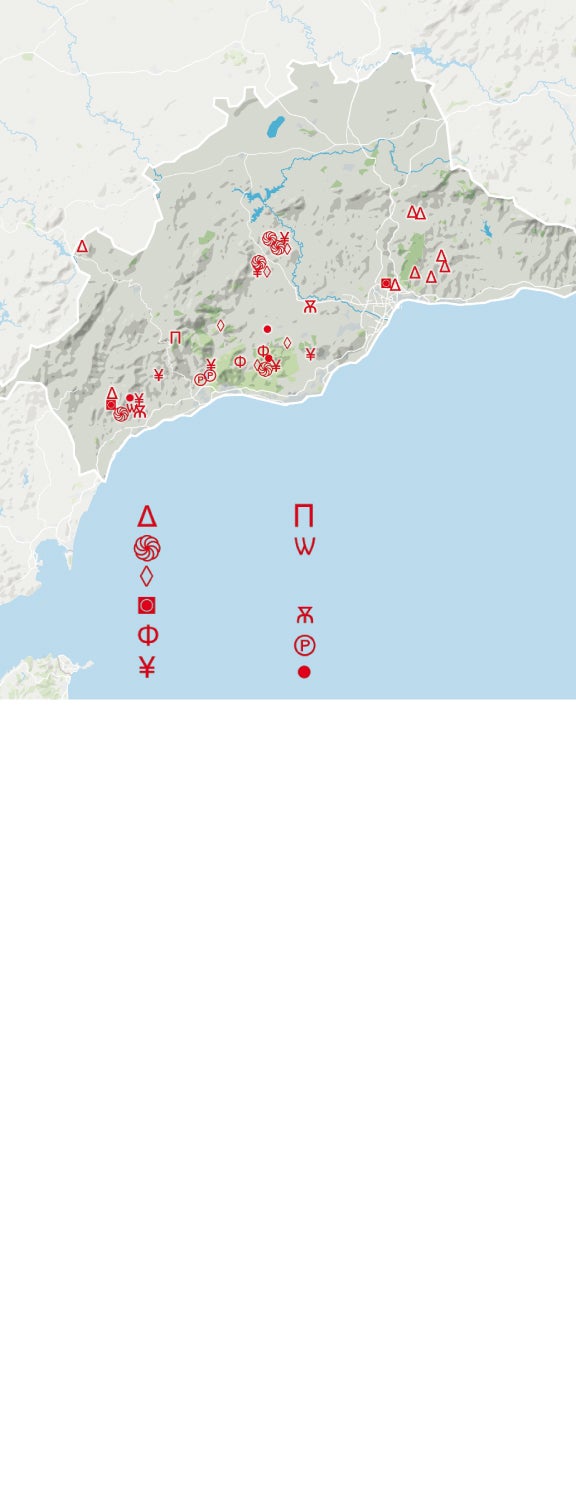
Minerals in Malaga
Álora
Ronda
Malaga
Marbella
Estepona
Copper
Boron
Chromium
Tungsten, Bismuth, Tellurium
Nickel
Cobalt
Lithium
Titanium
Platinum
Graphite
Rare earth elements
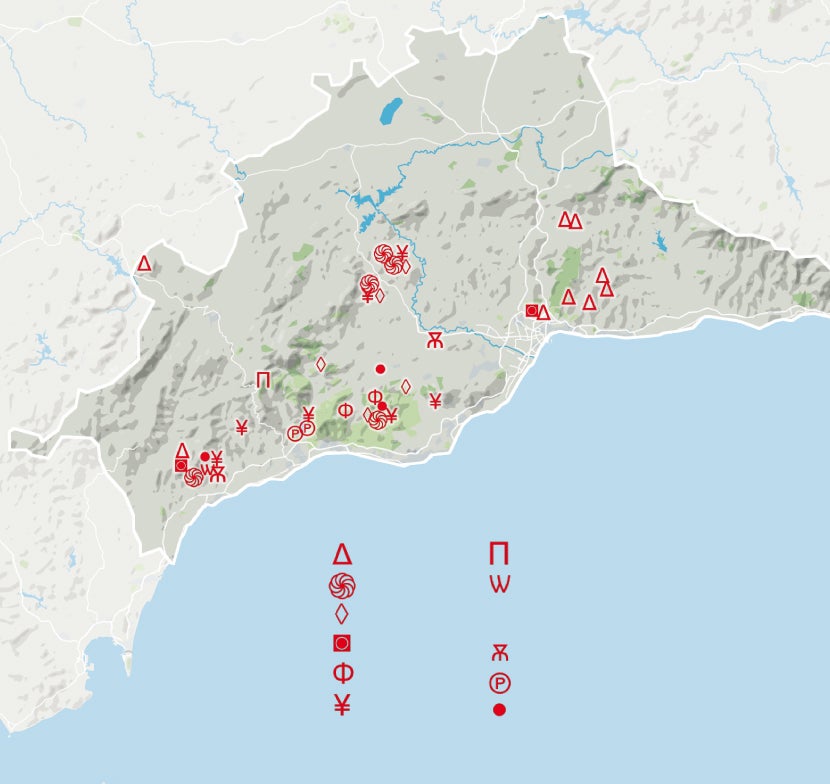
Minerals in Malaga
Álora
Ronda
Malaga
Marbella
Estepona
Copper
Boron
Chromium
Tungsten, Bismuth, Tellurium
Nickel
Cobalt
Lithium
Titanium
Platinum
Graphite
Rare earth elements

Minerals in Malaga
Álora
Montes de Malaga
Ronda
Sierra de las Nieves
Malaga
Sierra de Mijas
Sierra Blanca
Sierra Bermeja
Marbella
Copper
Boron
Estepona
Chromium
Tungsten, Bismuth, Tellurium
Nickel
Cobalt
Lithium
Titanium
Platinum
Graphite
Rare earth elements
Across the Andalucía region and Malaga province in particular, there are reserves of copper, chromium, nickel, cobalt, titanium, graphite, boron, tungsten-bismuth, tellurium, boron, lithium, platinum and traces of rare earths. Also, other more common minerals such as iron, lead, zinc, antimony, manganese; together with industrial minerals (clays, gypsum, talc, quartz, etc). Following are the minerals found and their location in the province.
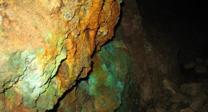
Copper
This metal is extracted from chalcopyrite and chalcocite, dispersed in abundance across the Montes de Malaga national park (Cerro Santopitar, Arroyo Hondo, el Boticario, Alcuza and Este Puerto de la Torre, Arroyo el Ángel in Olías, Mojea in Colmenar, San Ramón in Comares and Peñas de Cabrera, in Casabermeja). As well as in the mines of Arroyo de la Cueva in Genalguacil, with traces of other metals such as nickel-gold; and in Montecorto, in the Serranía de Ronda, alongside its large reserves of iron.
Copper is required for the manufacture of electronic components due to its high conductivity, ductile alloys, coinage, and is widely used in the production of wiring, piping, generators, motors, transformers, telecommunications, cars, aerospace and construction.
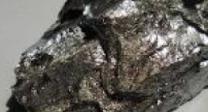
Chromium
This hard metal, highly valued for its resistant characteristics, is found in important chromite reserves with peridotite rocks, nickel and platinum, in the municipalities of Mijas (El Nebral), Ojén (La Gallega, Montenegral-Fuensanta), Estepona (Arroyo la Cala, Norte de los Reales), Carratraca (Los Jarales, El Gallego) and Álora (Sierra de Aguas).
It is an antioxidant and anticorrosive metallic element, used in high-resistance alloys, in the iron and steel industry, as a catalyst in chemical processes and as a colouring agent in paints.
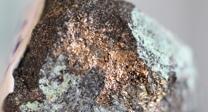
Nickel
This metal, which has similar characteristics to copper and is highly prized in alloys, is found in relative abundance in mineral species nickeline and pentlandite. These deposits in Malaga were already a "state mining reserve" between 1940 and 1960. Nickel appears forming seams in the peridotite deposits, together with chromium, platinum and cobalt, in the municipalities of Ojén (La Gallega, Cordobachina, Fuensanta and Zamba-Cerro Torrón); Estepona (Arroyo la Cala); Tolox (Puerto de las Golondrinas); Carratraca (Mina San Juan, Rosario, el Inglés and Cerro Minas in los Jarales); Álora (El Sapo in Sierra de Aguas) and Mijas (Valtocado, Puerto de Pescadores).
Malaga's rich geological and mining diversity, in a museum
In the city of museums, it is shocking that the wealth of the province's rocks is not exhibited in any public place. Around 2016 there was an initial project (Aula Museo de Geología y Mineralogía) led by geologist Juan Carlos Romero in the Trinidad neighbourhood. This project aimed to spread geological knowledge, but it had to close due to a lack of official support. While there had been contact with the mayor, Francisco de la Torre, this support never came to fruition. After six years of attempts, the pandemic was the last straw.
However, the field studies promoted by the museum, its partners with collaboration from the University of Granada, have made important advances in the knowledge of the strategic mineral reserves possible. This research will serve as a basis for further studies on the possibility of relaunching mining in Malaga, in the midst of the world "frenzy" for the metals needed for modern technologies.
It is not too late. The exhibition and documentary collections are available; the province is in a privileged position and this subject is going to grow in the global context. Therefore, there is potential to create a centre for geological and mining studies in Malaga.
"Malaga's nickel ores and its deposits linked to the peridotites are the most outstanding in Spain", said the geologist. "Many reserves have not yet been evaluated economically in depth, due to their capricious irregularity and the lack of studies with modern geophysical techniques."
It is a metal widely used in electronic components: computer technology, batteries with alloys, protective electrolytic coatings, electric vehicle components, alloys in kitchen batteries, coins, solar panels, and in the telecommunication and aerospace industries.
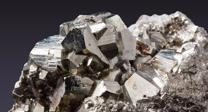
Cobalt
This metallic element has never been mined in Malaga, despite being a strategic metal on the rise to popularity. The mineral species in Malaga that contain cobalt are cobaltine, linneite and erythrite. The work of the Geology Museum revealed the presence of cobalt-copper deposits in Los Montes (southern edge of Cerro Alcuza, Arroyo Hondo); and in Arroyo de la Cueva mines in Genalguacil.
Cobalt is an important chemical element, primarily an essential component in lithium batteries used in electronic devices and electric vehicles. It is also used in heat and corrosion resistant steel alloys, in the aerospace and automobile industries, and in production of ferrite permanent magnets used in motors, loudspeakers, etc.
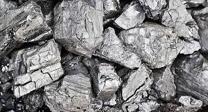
Titanium
This light metal, which stands out for its resistance to corrosion, has never been utilised in Malaga, although there are important deposits of its three species: ilmenite, rutile and titanite. It can be found in reserves on metamorphic and erosion rocks in the Sierra Alpujata, in the municipalities of Ojén (El Juanar, Puerto de Ojén); Monda (Los Villares, La Pelada) and Coín (Barranco Blanco).
It is on the rise due to its countless applications in the fields of aerospace, medical prostheses, dentistry, anti-corrosion materials, as an antioxidant, in pigments, paints, etc.
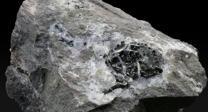
Graphite
This strategic mineral is abundant in Malaga, to the extent that the province's mountains contain "the largest reserves at national level". There are important deposits in Benahavís (Los Canutos de Doña Juana), which is the oldest graphite mine in Spain, in use since the 18th century. As well as in Estepona (El Nicio, Padrón); Istán; Álora (El Águila); Carratraca (El Gallego and Cerro Minas); Mijas (Peña Blanquilla) and Ojén (Linarejos).
Graphite is in demand due to its resistance to high temperatures: in industry; technology and electronics; manufacture of foundry crucibles; alkaline and rechargeable batteries; graphene extraction; bullet-proof vests; nuclear reactors; screens; lubricants; car brakes; protection of electronic devices, etc.
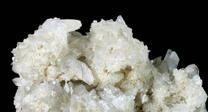
Boron
It is a metalloid element whose evaluation has gone unnoticed and is regaining interest due to mechanical and resistant properties. It is related to other minerals found in the province, such as ludwigite and dumortierite. There are reserves of fibrous boron in Igualeja (Puerto and mines of Robledal); Carratraca (Cerro Minas) and Pujerra (Cerro la Mora).
Boron is used as a tensile strength material in wind turbine blades; in glass manufacture; in medicine as an anti-inflammatory and for collagen production; in pyrotechnics; as a radiation shield in nuclear power plants and in industrial cleaning.
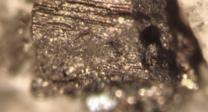
Tungsten-Bismuth-Tellurium
These three metallic elements combined were extracted in Malaga in a small mine to the north of Estepona (La Tejilla-Huerta Vinagre) around 1920, at a depth of just over ten metres. At the dawn of the Second World War (1944) they were in demand as minerals of strategic military interest (in El Bosquecillo mine). However, this niche has not yet been adequately investigated.
Tungsten has been used in the military industry for high-resistance alloys along with steel: air-raid batteries, tanks and other military vehicles; in metal works; and in the electrical industry for fluorescent filaments and lamps. The mineral species found in Malaga is scheelite.
Bismuth is used in medicines for patients with gastric problems, diarrhoea and ulcers, and in low fusibility alloys. Bismuth-containing mineral species are native bismuth and bismuthite.
Tellurium is used in optic fibre, cells in solar panels, diodes and batteries, as well as in dyes in glass and ceramics. The rare tellurium-containing mineral species in Malaga are joseite and tellurobismutite.
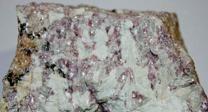
Lithium
A ductile and light alkaline metal that appears in moderate concentration in the earth's crust, with a vital role in rechargeable batteries and in medicine: to treat depression and bipolar disorders (lithium carbonate). In Malaga, there are relatively high rates of minerals such as lepidolite, in Estepona (Puerto Mancilla); Cártama (Trascastillo) and Benahavís (Montemayor). However, it has never been extracted.
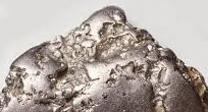
Platinum
A white, heavy metal, discovered in Malaga around 1919 by mining engineer Domingo de Orueta Duarte. It appears at primary level together with chromite, and in secondary deposits by erosion in the alluvium of the Guadaiza and Verde rivers, between Marbella and Istán; as well as in the chromium-nickel mineralisations in Carratraca (Mina San Juan, Los Jarales) and Ojén (Mina la Gallega, Arroyo los Caballos). Despite its good economic prospects, it has never been extracted despite reserves in Malaga being "the only known outcrops in Spain".
It has a wide range of uses due to its corrosion resistance, high melting temperature and ductility. It is used in jewellery for its beautiful reflective white colour; in catalysts to reduce pollutants; medical devices; thermometers; laboratory equipment; electronics; chemical industry; glass manufacturing and as a precious metal (for investment).
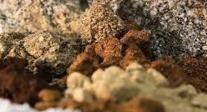
Rare earths
There are traces of rare earths in Malaga, in very low concentrations, linked to minerals such as clinopyroxenes, zircons, garnets and amphiboles such as hornblende. They are mineral components of the peridotites of Sierra Bermeja (Estepona); Alpujata (Ojén, Monda); Pelada (Coín) and Mijas. As well as in pockets of metamorphic rock, such as granitoids and gneisses, linked to the peridotites.
They have an enormous range of uses and show increasing market demand, mainly linked to precision technology and artificial intelligence. But their purpose doesn't stop there: including diode production in electronics; smart phones; computers and flat screen TVs; high-power permanent magnets found in electric motors; wind turbines and hard drives; components in electric vehicles; rechargeable batteries; displays and fluorescents in lighting and medicine; glass manufacturing; ceramics and metallurgy; and precision lasers in the fields of surgical medicine and advanced military industry.
With such a panorama of resources of national interest, geologist Juan Carlos Romero calls for greater investment in mining research by the state, "to update the obsolete data of the 20th century with more sophisticated means of prospecting". In addition, he calls for an end to the "mining standstill, due to the ecologist policies of European directives, which have stigmatised mining practices as the cause of environmental destruction, without valuing the wealth generated by mines and industrial development".

